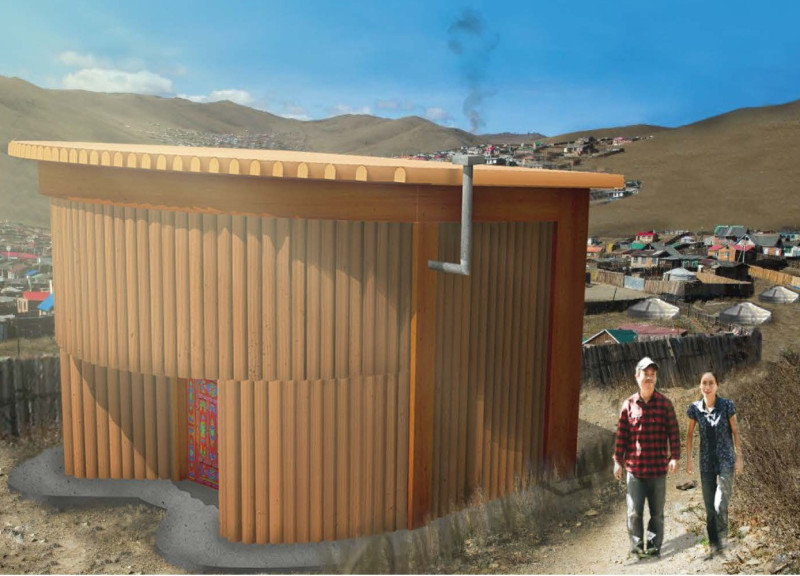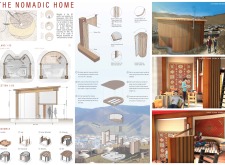5 key facts about this project
The Nomadic Home stands in the heart of Ulaanbaatar, Mongolia, where the city grapples with severe air pollution. This dwelling brings together the essence of traditional nomadic living with the requirements of modern urban life. It serves as a versatile living space designed for those making the move from rural to city environments, focusing on comfort, sustainability, and a sense of community.
Multifunctional Layout
The ground floor features a practical layout with designated areas for storage, living, dining, and cooking. This arrangement encourages a blend of private and communal activities. Residents can easily engage with one another while managing daily tasks. The first-floor bedroom offers a private area for rest. This setup balances the need for personal space and communal interaction.
Tambour Flexibility
A key element in the design is the tambour structure, which enhances the home's adaptability. These walls and sliding components allow for easy adjustments to the interior layout as occupants' needs change. This approach not only improves how residents use the space but also respects the traditional form of the yurt, linking the new design to cultural roots.
Sustainable Material Selection
Material choices play an important role in the home's performance. The design incorporates 45mm tambour slats that provide both structure and aesthetic appeal. A water-resistant layer, bulk wool insulation, and polycarbonate materials work together to create a climate-responsive envelope. These features help maintain warmth during Mongolia's long, cold winters while promoting energy efficiency.
Community-Centric Features
The inclusion of an open porch area enhances social interactions among residents, breaking down barriers that can lead to isolation in urban settings. This space allows neighbors to come together, fostering a sense of belonging. Such a communal aspect reflects the traditional practice of sharing living spaces in nomadic cultures.
The design finishes with tambour slats that rise effortlessly along integrated tongues, creating a space that can adapt easily. This feature captures the spirit of traditional nomadic architecture, making it relevant for contemporary life while ensuring flexibility for its occupants.



















































